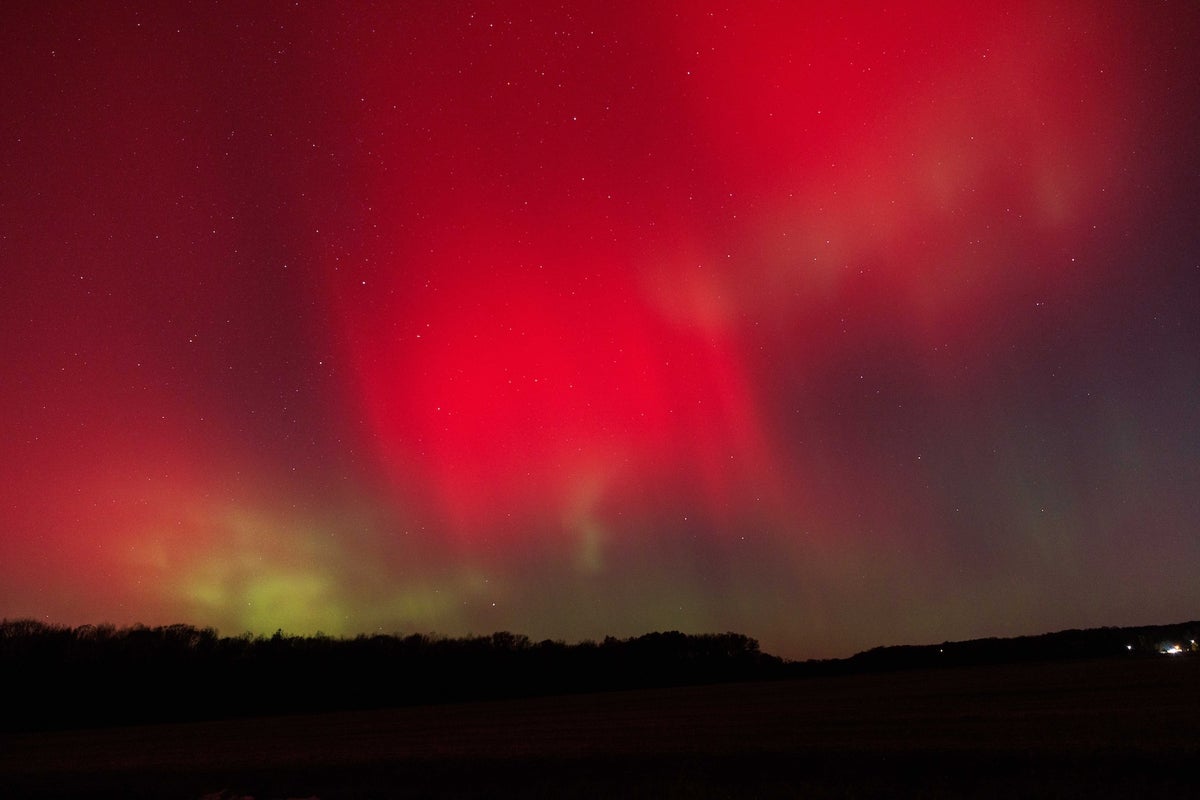
"On Tuesday night sky watchers across the U.S. were treated to a phenomenal aurora display, the product of a severe geomagnetic storm triggered by a recent burst of solar activity. Auroras were visible in areas that included Indiana, New Jersey, northern California, Florida and Texas. That is remarkably far south for the northern lights, or aurora borealis, which are typically restricted to a doughnut surrounding the North Pole. The southern lights, or aurora australis, were also visible in parts of Australia."
"Green auroras light up the night sky over Monroe, Wisconsin, on November 11, 2025, during one of the strongest solar storms in decades. According to the National Oceanic and Atmospheric Administration's Space Weather Prediction Center, which forecasts the effects of solar activity on Earth and its surroundings, geomagnetic storm conditions are expected to continue at a somewhat lower level. The northern lights seen above a vineyard in Geyserville, Calif., on November 11."
"And the event isn't over yet. Auroras occur after the sun emits what scientists call a coronal mass ejection, or CME, in the direction of Earth. A CME is essentially a blob of the plasma and magnetic field that makes up our star. When this material interacts with the gases in Earth's atmosphere, the resulting energy transfers light up the skies."
A severe geomagnetic storm caused by multiple coronal mass ejections produced widespread auroras across the United States and parts of Australia. Observations reported green northern lights visible as far south as Indiana, New Jersey, northern California, Florida and Texas. The NOAA Space Weather Prediction Center forecasted continued geomagnetic storm conditions at somewhat lower levels. Coronal mass ejections are expulsions of plasma and magnetic field from the sun that light up Earth's atmosphere when they interact with atmospheric gases. Multiple CMEs released over consecutive days contributed to the event, and forecasters expected an additional outburst to reach Earth within hours.
Read at www.scientificamerican.com
Unable to calculate read time
Collection
[
|
...
]